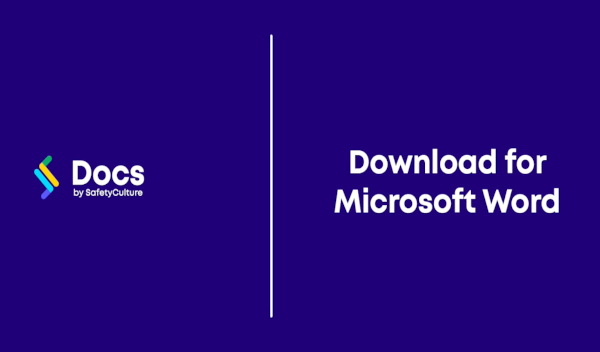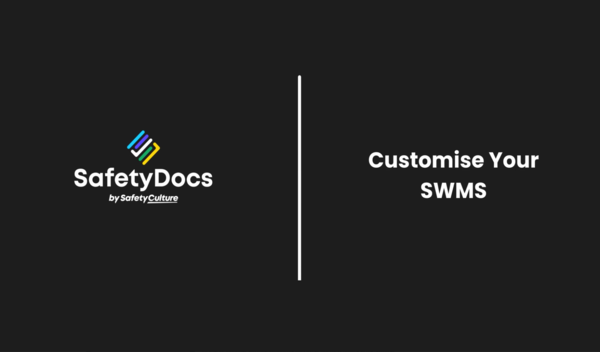Glazing Vacuum Lifting Attachment Safe Work Method Statement
- Instant Document Delivery via Email.
- Add to your existing management system.
- Can assist in ensuring workers are adequately trained.
- Customisation instructions provided.
- Microsoft Word Format (Fully editable).
- Only pay once (no subscriptions required).
Glazing Vacuum Lifting Attachment Safe Work Method Statement
This Glazing Vacuum Lifting Attachment SWMS is designed to guide operations involving single and multiple suction pad vacuum lift attachments for safety and compliance in high-risk construction environments.
Job Steps Covered in Glazing Vacuum Lifting Attachment SWMS
- Training: Emphasises the importance of ensuring all operators are fit for work and properly licensed.
- Planning: Focuses on the assessment of risks and the appropriateness of attachments for specific operations.
- Arrival On-site & Assess On-site Conditions: Details the initial site assessment for safety and suitability.
- Check Weather Conditions & Prepare: Advises on weather considerations and preparation.
- Delivery & Removal of Vacuum Lifter: Outlines the establishment of exclusion zones to prevent unauthorised access.
- Housekeeping: Stresses the importance of maintaining a clean and safe work area.
- Manual Tasks: Addresses the prevention of musculoskeletal disorder (MSD) injuries.
- Changing the Lifter Attachment: Covers safety protocols for changing attachments.
- Pre-start Check: Equipment is in sound mechanical condition before use.
- Worker Consultation: Highlights the importance of effective communication between operators and ground workers.
- Lifter Operation: Details safe operation practices to prevent accidents.
- On Completion: Outlines steps for safely concluding operations.
- Emergency Response: Provides protocols for responding to emergencies.
Each purchase of our SWMS comes with a complimentary copy of the Legislation & Codes of Practice Reference List, valued at $19.95. This valuable resource provides an up-to-date overview of relevant laws and standards, further supporting your compliance efforts.
Key Features of the SWMS
- Comprehensive Risk Assessment: Includes a detailed risk matrix to evaluate and mitigate potential hazards.
- Regulatory Compliance: Adherence to Australian legislation, keeping operations legal and safe.
- Hazard Management: Offers strategies for managing a variety of risks, from environmental to equipment-related.
Who is it Suitable For?
This document is essential for businesses and workers involved in the operation of vacuum lifting equipment, particularly in construction settings where adherence to safety and current regulations is critical.
Ensure your team is equipped with the knowledge and tools to operate vacuum lifting attachments safely and efficiently.
- Instant Document Delivery via Email.
- Add to your existing management system.
- Can assist in ensuring workers are adequately trained.
- Customisation instructions provided.
- Microsoft Word Format (Fully editable).
- Only pay once (no subscriptions required).
Glazing Vacuum Lifting Attachment Safe Work Method Statement
This Glazing Vacuum Lifting Attachment SWMS is designed to guide operations involving single and multiple suction pad vacuum lift attachments for safety and compliance in high-risk construction environments.
Job Steps Covered in Glazing Vacuum Lifting Attachment SWMS
- Training: Emphasises the importance of ensuring all operators are fit for work and properly licensed.
- Planning: Focuses on the assessment of risks and the appropriateness of attachments for specific operations.
- Arrival On-site & Assess On-site Conditions: Details the initial site assessment for safety and suitability.
- Check Weather Conditions & Prepare: Advises on weather considerations and preparation.
- Delivery & Removal of Vacuum Lifter: Outlines the establishment of exclusion zones to prevent unauthorised access.
- Housekeeping: Stresses the importance of maintaining a clean and safe work area.
- Manual Tasks: Addresses the prevention of musculoskeletal disorder (MSD) injuries.
- Changing the Lifter Attachment: Covers safety protocols for changing attachments.
- Pre-start Check: Equipment is in sound mechanical condition before use.
- Worker Consultation: Highlights the importance of effective communication between operators and ground workers.
- Lifter Operation: Details safe operation practices to prevent accidents.
- On Completion: Outlines steps for safely concluding operations.
- Emergency Response: Provides protocols for responding to emergencies.
Each purchase of our SWMS comes with a complimentary copy of the Legislation & Codes of Practice Reference List, valued at $19.95. This valuable resource provides an up-to-date overview of relevant laws and standards, further supporting your compliance efforts.
Key Features of the SWMS
- Comprehensive Risk Assessment: Includes a detailed risk matrix to evaluate and mitigate potential hazards.
- Regulatory Compliance: Adherence to Australian legislation, keeping operations legal and safe.
- Hazard Management: Offers strategies for managing a variety of risks, from environmental to equipment-related.
Who is it Suitable For?
This document is essential for businesses and workers involved in the operation of vacuum lifting equipment, particularly in construction settings where adherence to safety and current regulations is critical.
Ensure your team is equipped with the knowledge and tools to operate vacuum lifting attachments safely and efficiently.


